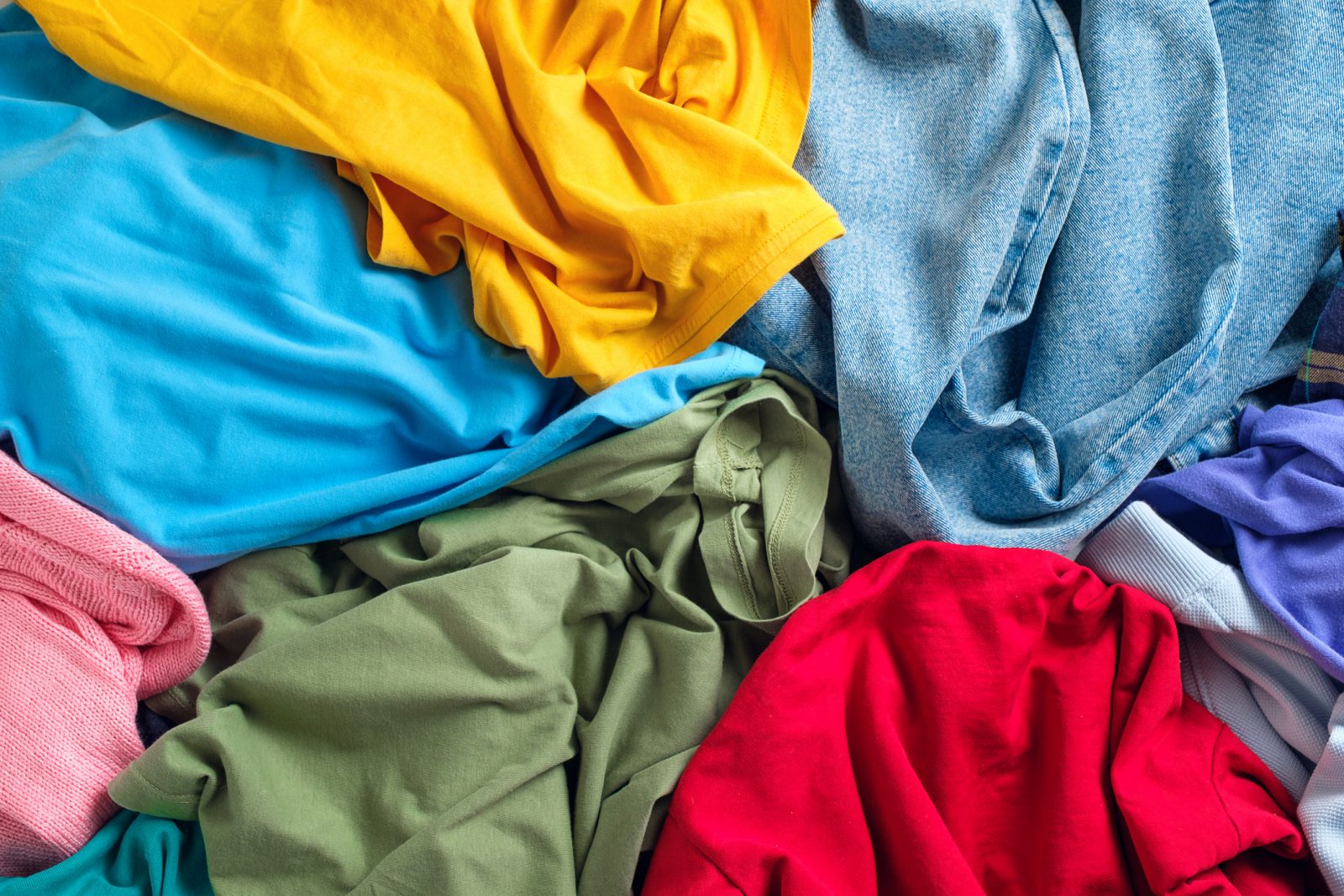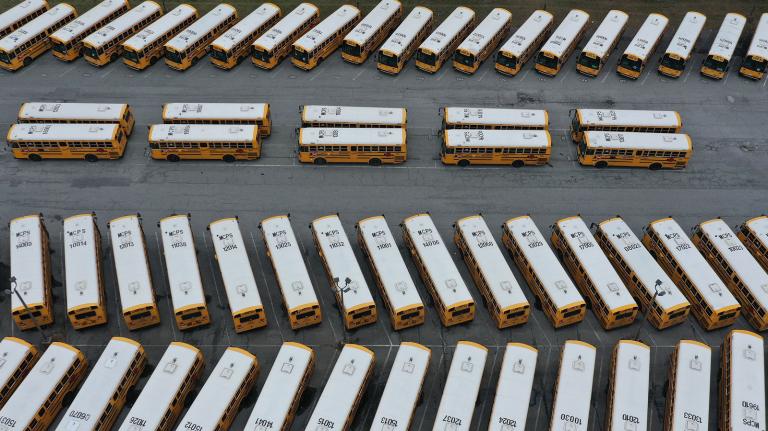Tracy Meserve is a librarian at The George Washington University and The Textile Museum in Washington, D.C.
Every year, a host of new sustainable fashion companies crop up, each capitalizing on consumers who wish to mitigate the environmental effects of their consumption. But ethical purchases can only do so much. Elizabeth Cline, author of Overdressed: The Shockingly High Cost of Fast Fashion, recently admitted that her decades of careful consumption have accomplished nothing: “I’ve stopped confusing my ethical PJs for social change — and I’ve thrown myself into figuring out how to build real political power instead,” she wrote in Atmos.
The textile industry is a major environmental problem: Fast fashion is adding to our already overfilled landfills, while its production and transport is contributing to our carbon load; pesticide-heavy cotton crops are polluting our land and water; and polyester microfibers are damaging our oceans. And then there are the labor violations associated with the industry worldwide.
What we really need are policy changes that bolster local organic textile production and require U.S.-based companies to mitigate microfiber pollution. Just as the government mandates seat belts and airbags for cars, textiles should be regulated so that consumers won’t have to be burdened with the choice of whether or not to buy “ethical fashion.”
For most of human history, textiles have been considered some of the most valuable items that people own — sometimes considered more valuable than gold. The average cost of a dress in the early 1900s was roughly $200 in today’s dollars. Clothing was a luxury good and closets were small. Until very recently, people owned few items of clothing and went to great lengths to preserve their condition: Women would sew sweat guards into the underarms of dresses, and wear underpinnings like petticoats and camisoles so their clothing didn’t touch their skin and could be washed less. When a woman wanted to update her wardrobe to reflect the latest trends, she might change out a collar, update the style of the sleeves, or shorten hems rather than invest in a whole new outfit every season. This focus on reuse was not just ethical, it was economical too.
I’m not suggesting that we trade in our leggings and return to the days of formal starched skirts and slips. But today, thanks to globalization and mass production, a T-shirt costs the same as a latte. Textiles have become trivial, but after food and shelter, they are among our most basic human needs. They are the sheets we sleep on, the towels we dry ourselves off with, the carpets we walk on, and even the masks we now wear on our faces. We used to appreciate textiles more because we had to pay what they’re actually worth.
It is time to give textiles the attention that they deserve and to understand how America is in a unique position to enact change worldwide. The U.S. produces 16 percent of the world’s cotton, but only one-tenth of 1 percent of that is organic cotton, which is grown without toxic pesticides and fertilizer. According to Rebecca Burgess, author of Fibershed, it’s hard for farmers to get started because there’s little access to a diverse and non-genetically engineered seed source.
The other problem is that most U.S.-grown cotton is sent overseas to be combed and spun into fiber. We no longer have the necessary machinery. That’s true for wool as well — the U.S. produces millions of pounds of wool every year, but we ship most of it overseas to be processed. These obstacles make it impossible for consumers to buy local and organic clothing the way that we buy local organic produce at farmers markets.
We may not be able to stop the titans of fast fashion from producing cheaply overseas, but if the mainstreaming of organic food is any guide, we could provide American consumers with better options by bolstering our own textile production. For her part, Burgess is advocating “farm to closet” regional economies, including investments to create regional banks for organic cotton seeds and milling infrastructure so cotton can be manufactured locally from seed to final garment. By investing in modern textile infrastructure, which would include agriculture infrastructure, the U.S. could have an impact on the global textile industry.
Another major fiber that deserves our attention is polyester. Since its invention in 1941, polyester has become the fiber of modernity — it is cheap, durable, and easy to care for. However, polyester is plastic, and the plastic used by the textile industry is a major contributor of plastic pollution in our oceans.
Recycled polyester is more expensive to produce than virgin polyester, so most companies won’t invest in it if their aim is to cut costs and not to attract a limited number of ethical consumers. In the United Kingdom, a new tax has been proposed that would apply to plastic packaging that does not contain at least 30 percent recycled plastic. The U.S. could impose a similar tax on polyester products, creating a financial incentive for fashion labels to use recycled polyester.
Another problem with polyester is that it’s not biodegradable: More than 80 percent of American water contains microfibers, which will remain in our water supply for decades to come. Thirty-five percent of microfiber pollution is produced by washing our clothes, yet most washing machines do not contain filters to prevent the leaching of plastic into our drinking water. You can buy a product to wash polyester items in, called a guppy bag, which filters microfibers, but that puts the onus on the individual consumer. In France, all new washing machines are built with a microfiber filter. The U.S. could follow.
A plethora of bold policies are possible, but maybe owing to our throwaway attitude toward textiles, they are not mentioned in either the Green New Deal or Biden’s infrastructure plan. In the absence of federal action, local and state governments could invest in infrastructure and their local farmers. California is trying to do just that with AB 125, which would put $3 billion in borrowed bonds toward climate-resilience investments in agriculture, including regional fiber economies. If approved by the legislature, the proposal would go on the 2022 state ballot.
We used to have this infrastructure in the United States: Cotton was spun and woven into fabric in Lowell, Massachusetts. Factories in New York City’s garment district cut and sewed it. Of course, horrific practices at these factories helped fuel the labor movement and necessary laws. But globalization allowed businesses to move overseas to where production was less regulated and cheaper. And now most people have no idea what a dress should really cost.
We need more than ethical labels; we need new national textile infrastructure policies. Then we can start thinking of T-shirts the way we think of the seat belts in our cars — that is, not at all.




